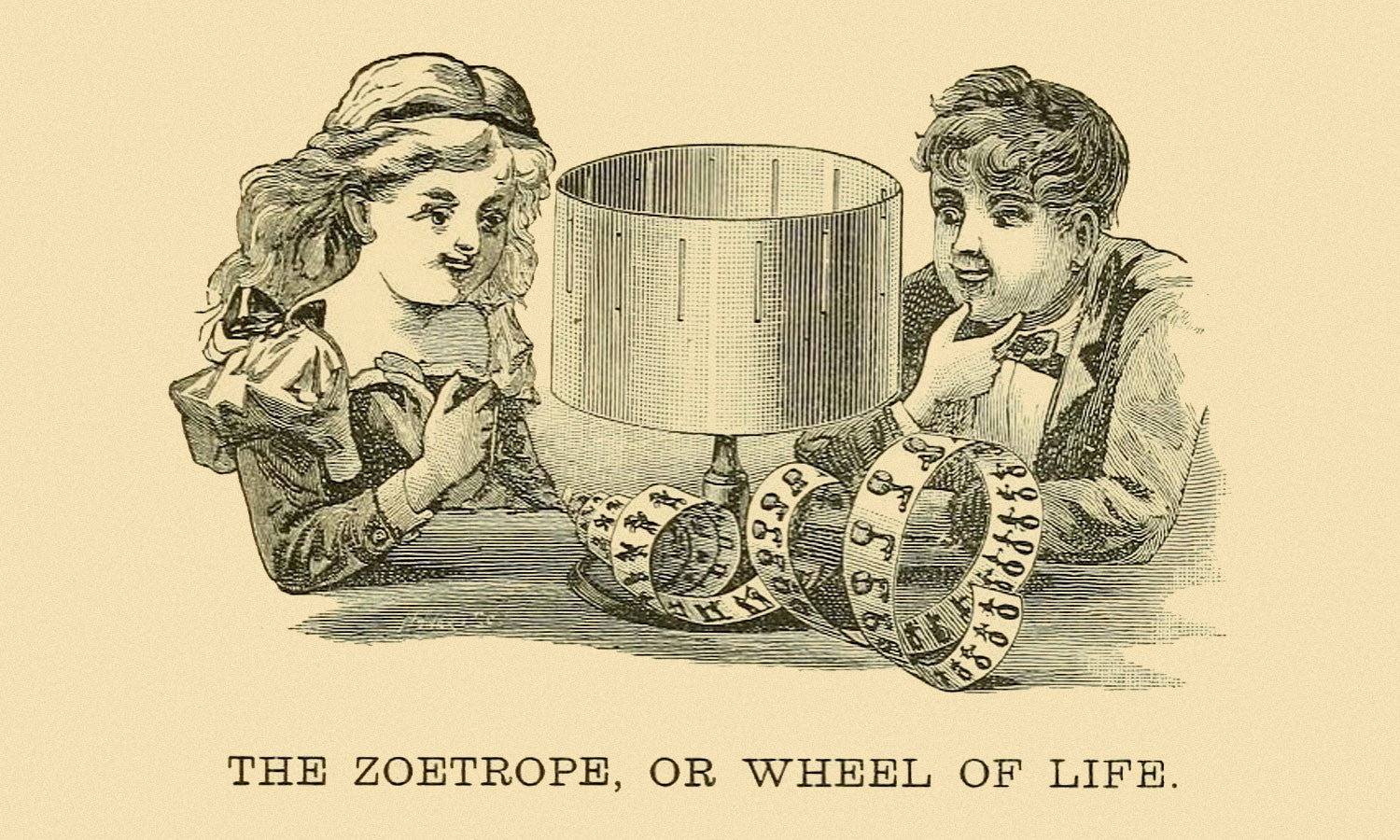The Zoetrope or “wheel of life” is an analog animation device that predates the dawn of cinema. Invented by William George Horner in 1834, the machine was first marketed in 1887, before most people had ever heard of a “motion picture.” At that time, the very idea that a picture could move must have seemed completely fantastic. However, a zoetrope is a fairly straight-forward machine.

A strip of sequential images sits inside a cylinder full of evenly spaced, vertical slits. By spinning the cylinder and looking through the holes from the outside, multiple viewers can enjoy a simple looping sequence of motion. It’s kind of like a victorian-era animated gif.

Many zoetropes came with multiple strips depicting various different animations.

The zoetrope relies on the persistence of vision illusion. The slits in the side of the cylinder trick your eyes and prevent the images from blurring together as they spin. Another way to accomplish this effect is by using a strobe light. The rhythmic flashing of the light eliminates the need for an exterior viewing cylinder completely and instead of two-dimensional drawings, the zoetrope can animate three dimensional sculptures. Pixar created a beautiful example of this.

(Watch the full video explanation of the project.)
Nowadays, the same technique is being utilized with the help of computerized light projection and 3D printed sculptures. The results are mesmerizing. Here’s an example created by artist Akinori Goto:

(Plus, a full video explanation of the project.)
Despite recent advances in technology, there’s still something charming about the analog simplicity of the original design. In fact, it’s pretty easy to make your own zoetrope from items you probably already have laying around the house.
Have you seen any other cool examples of zoetropes? Post links in the comments below.





2 comments
Leave a comment
This site is protected by reCAPTCHA and the Google Privacy Policy and Terms of Service apply.